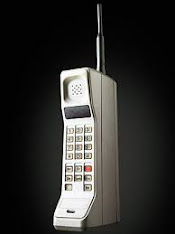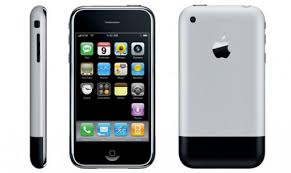Evolution of Mobile Phones (1980s to Present)
Three decades ago, almost everyone in Kenya had a perception that mobile phones could not be accessible to the low-class population. In 2002, only two people out of a hundred of the 38 million people at that time had a mobile phone. In the same year, a country like Ireland had more than 77 for every one hundred people.
Telecommunication companies began to set camp in the country, erecting masts even in the most remote regions. Within no time, cheap handheld devices became available. The services were prepaid and expensive. However, they facilitated communication with people in areas that you could take hours to reach. In four years from 2002, the number of mobile phones in the country increased ten times from one million to ten million.
However, less than twenty years later, the story is entirely different. Today, Kenya leads in Africa when it comes to smartphone penetration and usage of the internet. It has become a crucial device for most activities and transactions. Other than facilitating the execution of business, mobile phones have opened up numerous online opportunities in Kenya, creating job opportunities to a large population, especially the youth. But do you know how their technology has evolved? Below is a list of the mobile phone models tracing back to 1983.
The bulky device
Motorola DynaTAC 8000X (1983)
Although there are many different models in the market, do you know that Motorola is behind the first portable phone device?
The 1983 device was quite big and bulky, weighing 0.8 Kg. It having such a device at that time was a real deal.
The era of basic improvements
Motorola MicroTAC 9800X (1989)
Six years later, Motorola decided to make changes on the first device. They came up with a small and less bulky device. It had a flip cover that allowed the user to open and close over the keypad.
Nokia 1011 (1992)
In 1992, Nokia came up with a GSM handheld device that had a storage capacity of less than 100 phone numbers. At least, it was lighter and pocket friendly, weighing 475 g only. The most significant feature of this device was the SMS service that allowed the user to go beyond mere calls.
Motorola StarTAC 8500 (1996)
Motorola kept on improving their devices, and their 1996, StarTAC 8500 took the consumer market by storm. The most significant feature in this device was the buzz mode. Yes, this model was the first mobile phone to have a vibration mode.
Nokia 8110 (1996)
It was the first handheld mobile device to have a slider design. Therefore, it is in 1996 that the consumers got to hold a phone that could slide over the keypad. Interestingly, this model came back into the market in 2018 with its trademark slider design.
The old Nokia 8110 The Relaunched Nokia 8110
However, it had to incorporate today's elements such as dual SIM, a rear camera and 4G lite. Otherwise, who could buy such a device in 2018?
Siemens S10 (1998)
Do you remember that Siemens mobile phone? It is interesting to note that the brand was among the five largest handset manufacturers by market share.
Besides, this is the brand behind the introduction of colour display in mobile phones. It was a great innovation of that time, although the only four colours could display.
BlackBerry 850 (1999)
BlackBerry got into the mobile market with this 1999 model. At that time, it was among the first mobile device to have a full keypad.
Nokia 3310 (2000)
Nokia devices have been popular in Kenya for the first decade of the 21st century. Nokia 3310 released in 2000 is among them and has been a common device among Kenyans up to around 2006.
New vs Old Nokia 3310
Recently, Nokia redesigned this model and relaunched it, incorporating features such as camera and colour display.
Samsung SCH-V200 (2000)
It was the first mobile phone to have an inbuilt camera. It could take a maximum of 20 images, and it was possible to transfer them into a computer.
The era of touchscreen technology
Apple iPhone (2007)
LG Prada is the first mobile phone to incorporate touchscreen technology. However, it is Apple's 2007 iPhone that came up with a notable revolution of this technology. It was fully touch-based while most phones were relying on keypad inputs.
Samsung Galaxy Note (2011)
This model has gone through a long journey since its release in 2011. Samsung Galaxy Note series continues with some of the latest models, including Note 9.
Apple iPhone 5s (2013)
Most people tie the fingerprint sensor feature to the iPhone 5s model. The tech has been there nine years before the release of this model.
The first one was Pantech GI100, although it never shook the market. Besides, there were G500, G900 and HTC P6500 that had the feature too. But Apple seems to be excellent in revolutionizing aspects that are yet to see full light.
Huawei P20 Pro (2018)
Huawei P series is among the models that have set the bar high for camera phone technology. This device had a 40MP main camera.
Distinguishing features are its ability to shoot low light images and slow-motion videos.
The foldable phones
Royole FlexPai (2018)
It is now time for foldable devices. They appear to give an insight into what the future has in store for you. Royole was the first company to design a foldable phone. Despite the invention, the model received a ton of backlash as users complained of unappealing hinges and poor user experience.
Galaxy Fold & Huawei Mate X (2019)
Two rival brands Huawei and Samsung jumped into the game and each came up with a foldable phone. The two devices are Galaxy Fold and Huawei Mate X.
Galaxy Fold Huawei Mate X
The prices of mobile devices have been on the drop; most users focus more on the perceptions of a brand and its features. Brands are investing on features such as 4G, high-quality camera, large screen size and more storage.
Mobile devices and more so smartphones are increasingly becoming a necessity to live in Kenya. Among the contributors to the increase in the need for these devices is mobile money. More sectors in the economy continue to adopt mobile payments. Besides, the population continues to realize the online opportunities in Kenya that are possible with this technology.
Fred Kabiru
Fred Kabiru is a content creator and SEO specialist. He is passionate and experienced about Business, Digital Marketing, News and Technology. He is a believer of content worth reading for a brand worth following.





















The mobile technology has come a long way and smartphone which are coming out in 2020 are more powerful than most third generation laptops, its an evolution which you need to be monitoring as a writer and keep updating as we advance ...
ReplyDeleteThanks Doreen
DeleteAm working on committing on updating the audience with any advancements as soon as they emerge